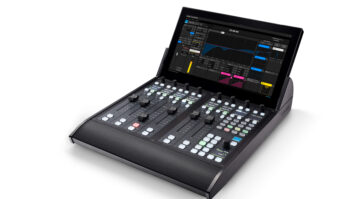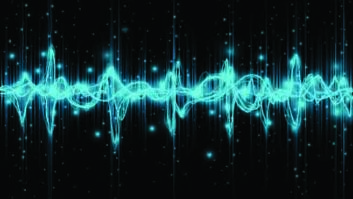
The audio production team behind the Voice of China, one of the most successful music shows on Chinese television, has been using Jünger Audio loudness control and audio processing equipment to ensure the quality of broadcasts transmitted in 5.1 surround sound.
Screened by Zhejiang satellite TV, the Voice of China recently completed its fourth series – the most popular and most widely watched to date. Based on the same concept as NBC’s the Voice, the show features four judges/coaches who used blind auditions to identify teams of singers they wanted to work with during the series.
Chief audio engineer for the show’s 5.1 surround sound production was Mr. Lou Wei from CTPC Studio, a division of CCTV. Working on behalf of Dolby China and the production company responsible for the Voice of China, Mr Lou has been looking after 5.1 surround sound and broadcasting since the first series.
In China, the format most widely used for surround sound production is Dolby E. However, Dolby Lab’s decision to stop making hardware products to monitor this format left a gap in the market that Jünger Audio – with the backing of Dolby – was only too happy to fill. Its D*AP8 codec edition units now incorporate a Dolby decoder as standard, along with a choice of optional encoders, so that broadcast engineers in post production, DVD and DTV facilities can check the quality of Dolby E, Dolby Digital or Dolby Digital-encoded audio prior to transmission.
Mr. Zhang Yan, Technical Director of Dolby International Services (Beijing) Co., Ltd, said: “After a long period of evaluation and testing, we discovered that the features and specifications of Jünger Audio’s D*AP8 processors, in particular the D*AP8 MAP Monitoring Processors, matched Dolby E productions very well. They support HDSDI embedding and de-embedding, as well as Dolby codecs, which is important because most of video equipment that works with Dolby E also supports HD-SDI, rather than the AES interface.”
For The Voice of China, Mr. Zhang Yan and Mr. Lou Wei specified a selection of Jünger Audio equipment, including two D*AP8 TAP EDITION audio processors, which were installed in the transmission chain and used for Dolby E encoding. Also chosen were two D*AP8 MAP EDITION audio devices incorporating a comprehensive Dolby toolkit including metadata emulation, along with full loudness metering and logging capabilities. These multichannel monitoring units were installed in the programme chain and used for Dolby decoding and metadata emulation. A third D*AP8 MAP was used for Dolby metadata emulation during the music pre-mix sessions, and a 2-channel D*AP4 VAP Voice Audio Processor was used for all vocal balancing and processing, including commentary from the judges and hosts and the singers’ speeches.
Mr. Wu Xiao Dong, Director of the Audio Department at the Zhejiang TV Group Production Centre, adds that there is currently great demand for 5.1 surround sound from the ZJTV Group and that Jünger Audio equipment is proving valuable in helping to meet this demand.
“Jünger Audio is one of the few manufactures that supports all Dolby codec hardware solutions, along with specific voice processing and auto up/down mix features,” he says. “The real benefit these units bring to our productions is the ability to tackle Dolby E encoding, Dolby metadata emulation, loudness and vocal voice processing.







